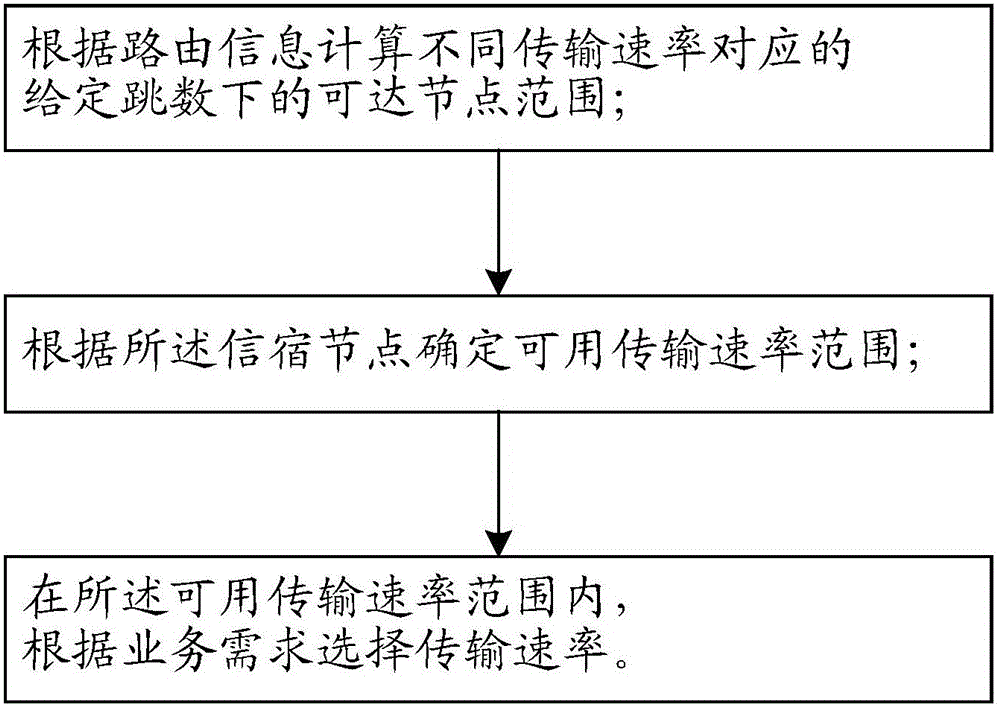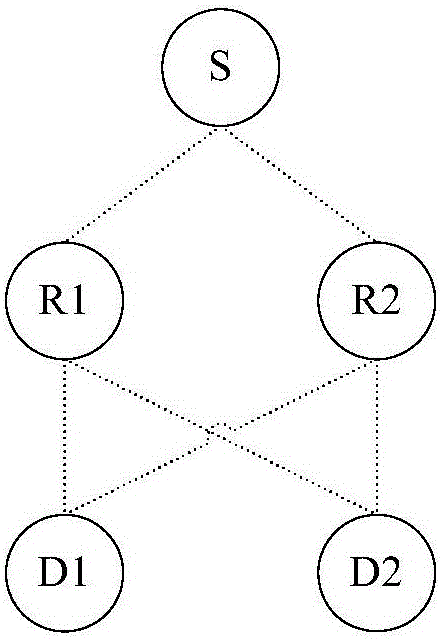Method for selecting transmission rate in cooperative diversity
A technology of transmission rate and cooperative diversity, applied in network traffic/resource management, electrical components, wireless communication, etc., can solve problems such as large fluctuation range and performance loss
- Summary
- Abstract
- Description
- Claims
- Application Information
AI Technical Summary
Problems solved by technology
Method used
Image
Examples
Embodiment 1
[0037] The topology used in this embodiment is as follows figure 2shown. Node S is the source node. According to the routing information, all available paths in the area are obtained, such as image 3 .
[0038] According to the channel parameters of each hop in each path, assuming that the following services require BLER Figure 4 .
[0039] According to business requirements, determine the transmission rate of the business, as follows:
[0040] ——Node S transmits a service whose sink nodes are D1 and D2, and the service requirement is to maximize the transmission rate: the available transmission rate range is determined to be 0~r2 according to the sink node, and the final transmission rate is determined to be r2.
[0041] ——Node S transmits a service whose destination nodes are R1, R2, D1, and D2. The service requirement is to maximize the transmission rate: the available transmission rate range is determined to be 0~r1 according to the sink node, and the final transmissi...
Embodiment 2
[0047] The topology used in this embodiment is as follows figure 2 shown. Node S is the source node, and needs to send a service whose destination nodes are D1 and D2, and the reliability requirement is BLER<0.1%.
[0048] Node S first calculates the reachable nodes under the given hops of cooperative diversity at different transmission rates according to the routing information and channel parameters, such as Figure 6 .
[0049] Node S calculates that the transmission rate to be adopted is 2.2 Mbps, and triggers the rate training process. Assume that in the process:
[0050] - The standard for relay and sink nodes to perform feedback is that all relay and sink nodes perform feedback;
[0051] ——The content of the feedback is to receive BLER, and the business requires to receive BLER<0.1%;
[0052] ——After the end of the training, the transmission rate of the training message used for the second time has a reverse increase of no less than 0.1 Mbps, the transmission perf...
PUM
 Login to View More
Login to View More Abstract
Description
Claims
Application Information
 Login to View More
Login to View More - R&D
- Intellectual Property
- Life Sciences
- Materials
- Tech Scout
- Unparalleled Data Quality
- Higher Quality Content
- 60% Fewer Hallucinations
Browse by: Latest US Patents, China's latest patents, Technical Efficacy Thesaurus, Application Domain, Technology Topic, Popular Technical Reports.
© 2025 PatSnap. All rights reserved.Legal|Privacy policy|Modern Slavery Act Transparency Statement|Sitemap|About US| Contact US: help@patsnap.com



